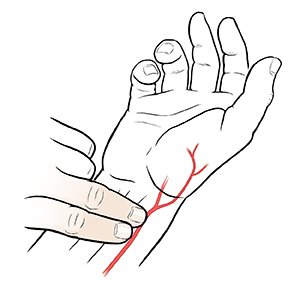HEART RATE AND PULSE RATE
Heart rate is the number of times the heart beats per minute. Activities, the normal heart rate is 70 times [per minute in men and 75 times per minute in woman. the heart rate fluctuates a lot depending on factors such as activity level and stress level.
Heart rate can be measured by feeling the pulse. Pulse is the rhythmic expansion and contraction of an artery as blood is forced through it by the regular contraction of heart. Pulse can be felt areas where artery is close to skin for example at wrist, neck, groin or top of foot. Most commonly people measure their wrist.
Practical Work:
Investigation of the effect of Physical activity on pulse
Pulse rate tells us the heart rate. As heart pumps blood through body, a pulsing can be felts in some of the blood vessels close t skin's surface. Pulse rate is measured to see how well heart is working.
Problems: How is pulse rate measured and how it is affected by various activities?
Background information: 1. The pulse rate increase when involved in some physical exertion or exercise.
- Daily physical exercise increase the stamina and strength of the cardio-vascular system.
Producer: - Turn the palm side of your hand facing up.
- Place your index and middle fingers of your opposite hand on your wrist approximately 1 inch below the base of your hand.
- Press you fingers down in the groove at this point. You should feel a throbbing-your pulse.
- Count the number of beats for 10 seconds, than multiply this number by 6. This will give you your pulse rate per minute at resting condition.
- Do some physical exercise for example running in place, jumping jacks, or other exercise for one minute. After the exercise measure your pulse rate by the same method.
- Sit on a chair and take rest. After about five minutes take your pulse again and write it down.
- Record the difference in the table form and compare your calculation with the difference counted by your class fellows.
Observation: Student pulse rate at rest will very between 60-110 beats per minute. If pulse rate at rest is about 70 times per minute it may increase up to 100 beats per minute during exercise.
- Physical exertion and exercise should not be very strenuous that they increase your pulse rate beyond the limit.
Evaluation: 1. Are the heart rates of all students the same or different?
- What is thew average heart rates of all the students?
Method of taking pulse

Source of Photo
All data collected from my book of Science.